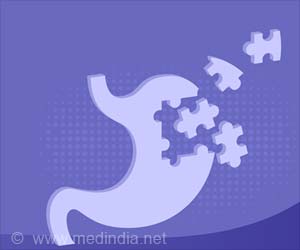Scientists have untangled two similar disabilities that often afflict stroke patients, in the process revealing that one may be treatable with drugs for Parkinson's disease.
Scientists have untangled two similar disabilities that often afflict stroke patients, in the process// revealing that one may be treatable with drugs for Parkinson's disease.
Researchers at Washington University School of Medicine in St. Louis showed that stroke damage in a brain region known as the putamen is strongly linked to motor neglect, a condition that makes patients slow to move toward the left side.
Like stroke patients with motor neglect, Parkinson's patients are also slow to initiate responses involving movement. Scientists attribute this deficit in Parkinson's disease to loss of neurons that use the neurotransmitter dopamine to regulate activity in the putamen.
"Earlier attempts to treat stroke patients with neglect with dopamine-like compounds have produced mixed results," says lead author Ayelet Sapir, Ph.D., postdoctoral researcher in neurology. "It's possible, though, that those unfavorable outcomes resulted from an inability to identify the patients most likely to benefit from the intervention. Our data indicate that patients with damage to the putamen may respond differently to this treatment than patients who have neglect from stroke damage to other parts of brain."
Sapir describes the research, which appears in The Journal of Neuroscience, as part of a broader effort to precisely determine how strokes in different parts of the brain's right hemisphere affect patients. She and others want to closely link damage in a given right brain region to a particular set of symptoms.
"This approach has been applied to strokes affecting the left hemisphere, where damage to various brain areas is linked to specific kinds of language deficits," Sapir says. "Taking the same approach to studying lesions of the right hemisphere should help improve patient treatment by allowing us to develop therapeutic approaches targeted to specific brain circuits and neurochemical systems."
Many problems after a right-brain stroke fall under the broad heading of neglect: inability to detect a stimulus or do something about it. Neglect is highly disabling since it interferes with a number of basic activities such as dressing, self-care and driving, Sapir notes.
Every year, approximately 3 to 5 million people with strokes on the right side of the brain between the ear and the temple develop a condition known as spatial neglect that hampers their ability to notice things on their left side. Patients may seem to be unaware of their left arm, for example, or might fail to eat from the left side of a food tray. The condition is most severe in the first few months following a stroke, but in some patients it becomes a chronic problem.
Some patients with strokes in this area develop a slightly different condition known as motor neglect. This causes them to be slow to act toward the left side of their environment. It might, for example, make them slow to swat at a bug that lands on their left side.
How to separate slowness to notice a stimulus (spatial neglect) from slowness to act on a stimulus (motor neglect) has been a persistent problem for neuroscientists. In a common laboratory test of neglect's effects, patients watch a video screen for the appearance of a stimulus, usually a symbol or shape, on either the left or the right side of the screen. When they see a stimulus, they report which side it was on to researchers.
The challenge for researchers was that spatial neglect and motor neglect produced the same results—a patient who was slow to report stimuli appearing on the left side of the video screen. This was true for spatial neglect patients because they were slow to see the stimulus; motor neglect patients could see it but were slow to make the movements required to report that they had seen it.
To overcome this problem, Sapir had patients start the test with their hand on a button located to the left of the video screen. When they saw a stimulus, they reached toward the video screen and touched it on the side where the stimulus appeared.
Slowness to respond to stimuli appearing on the left side of the video screen, she theorized, would mean the patient had spatial neglect and was having trouble noticing the stimuli. Patients who promptly noticed left-side stimuli could report that perception by reaching to their unimpaired right side.
Of 29 patients tested, six were able to respond promptly to left-side stimuli, suggesting they had motor neglect. When Sapir compared high-resolution magnetic resonance imaging brain scans from the two groups, she found a starkly consistent pattern: all the patients identified as having motor neglect had damage to the putamen, while those who still responded slowly to left-side stimuli did not.
Although the putamen isn't damaged in Parkinson's disease, scientists have identified it as a brain region that processes dopamine, the neurotransmitter that drops to low levels in Parkinson's patients.
Scientists plan further study of how other types of neglect may be connected to damage to different brain areas. As an example, Sapir notes that when clinicians give recovering stroke patients a simple drawing to copy, some will leave out the left side of the drawing, while others will copy objects from all over the drawing, but leave out the left sides of individual objects. Whether this represents different kinds of neglect stemming from damage to different brain areas is not yet clear.
"Another possible kind of neglect has to do with putting a patient's good hand on their bad side," Sapir says. "When you do this to some patients, their ability to respond with their good hand decreases. It's like a postural deficit."
Sapir and her colleagues hope to eventually develop a battery of tests that will allow clinicians to dissociate the different kinds of neglect and develop new treatments.
Source-Newswise
SRM/V





